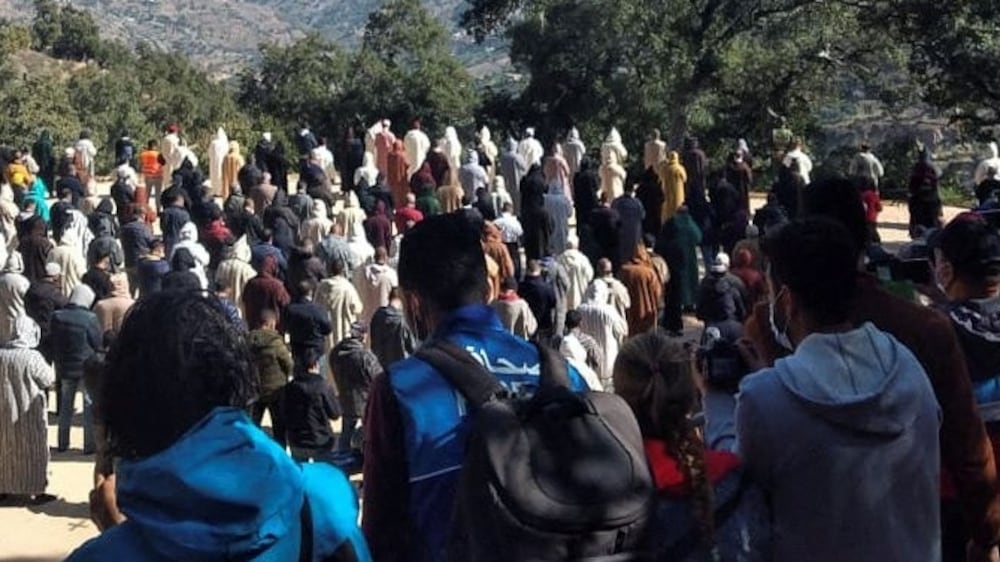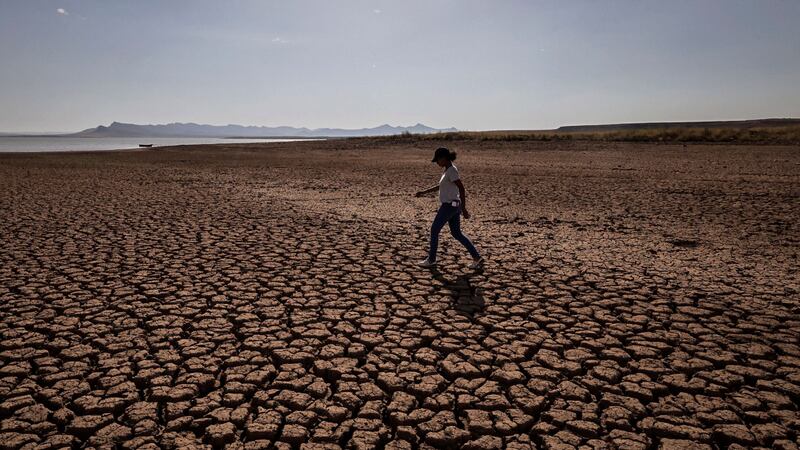In the Moroccan village of Senanat, 15-year-old Yassine used to skip school.
He wasn’t an optional truant, missing classes because of a lack of interest in his education. Rather, he was forced to walk long distances to collect water for his family.
The nearest source of fresh water used to be 3km away in the form of a small well in a neighbouring village.
To fetch it, Yassine piled up plastic containers on to a donkey cart, filled each to the brim with water and trotted back. The 5,000-litre haul lasted two weeks, at which time he would need to do it all over again.
Morocco is in the grip of its worst drought in 40 years. Erratic rainfall for the past four years has emptied reservoirs and decimated agricultural production. Rainfall this year was 64 per cent below average.
The dry weather is accelerating a water crisis that has been unfolding for decades: in 1960, a Moroccan could count on access to 2,560 cubic metres of water per year. Today, that figure has shrunk to about 600 cubic metres. The UN defines “water scarcity” as less than 1,000 cubic metres per person.
The severity of the drought has underscored the North African kingdom’s vulnerability to climate change. A July World Bank report said economic growth would dip to 1.3 per cent in 2022 from 7.9 per cent a year earlier and cited water scarcity’s blow to farming as the leading cause.
With few good options, the government has rationed supplies. Some farmers have abandoned their fields, and wheat and barley production was down 67 per cent this year.
The royal palace said in February it would spend 10 billion dirhams ($1.07 billion) to support farmers and improve water management.
Digging deeper
Remote villages such as Senanat, in western Morocco’s Safi province, are among the hardest hit. The community of 170 families is 45km from a major city.
Like many rural areas, its residents have historically relied on simple, hand-dug wells that tap aquifers a few metres below the surface. But amid the drought, this easier-to-reach water is running dry.
With no fresh rainfall, the most immediate solution is to tap deeper sources of groundwater. That’s the aim of Maa wa Namaa — Arabic for “water and development” — a Moroccan NGO launched in 2020.
The NGO first identifies communities most in need of a well, then it collects donations and appoints geological engineers to assess the feasibility of a site.
Its volunteers use robotic drills that can reach aquifers 300 metres below ground, far deeper than the traditional wells that dot Morocco's countryside. Each well has a solar panel that can operate its pump for 25 years.
انتهاء أشغال حفر و تجهيز بئر سعد بن أبي وقاص رضي الله عنه بدوار يوكين جماعة زرقطن إقليم الحوز .... فرحة السكان بنهاية...
Posted by MAA wa NAMAA - ماء ونماء on Friday, August 19, 2022
Redouane Moumouh, head of Maa wa Namaa, launched the project after he came across a village in December 2019 that was in dire shape.
Water was becoming so scarce that the village was emptying out, with more than half of its population having fled.
Mr Moumouh and a few others volunteered to help build a new well and, six months after it was finished, residents began to return.
Maa wa Namaa has since built about 100 new wells, said Mr Moumouh, bringing fresh water to more than 47,000 Moroccans.
Senanat’s new well was built in January 2021. Before that, villagers had to pay 180 dirhams ($16.50) for a canister that could last three days, said Kacem Fathi, head of a local development organisation that works in Senanat.
In rural areas, where the average salary is $250 a month, it’s a price that’s out of reach.
“I used to go to work without peace of mind, knowing that I was leaving my family behind to deal with the water problem,” said Redouane, Yassine’s father.
The new well is only 30 metres from Redouane and Yassine's home. What was once a several-hour trip now takes a few minutes, meaning Yassine no longer has to skip class.
Wells do come with risks. Their potential for peril was brought into sharp relief after the tragic death of five-year-old Rayan Orham, who slipped down a 32-metre shaft last February.
Hundreds attend funeral for Moroccan boy who fell down well

The incident grabbed global headlines and prompted Saudi Arabia to order 2,450 of its abandoned wells to be filled.
Morocco has since passed legislation that stipulates fines and even prison for building illegal wells that break safety standards. Maa wa Namaa says their wells are fitted with covers to minimise risk.
The wells provide relief, but they won’t solve Morocco’s water scarcity problem. Overuse can drain aquifers and further deplete water needed for irrigation.
One way to prevent this would be to equip the wells with meters that track how much is extracted, said Faisal Aziz, professor of water engineering at Cadi Ayyad University.
Better yet would be sensors that allow the government to monitor water usage from afar.
“The state should use advanced metres. This is where scientific research comes in. They can rely on remote sensors [to track water usage],” he said.
In the long run, Morocco will need new sources of water. The government said it plans to build 20 desalination plants by 2030 and invest in wastewater treatment to reuse water for agriculture.
For now, Maa wa Namaa’s wells provide breathing room.
“These initiatives need to be expanded throughout the rest of Morocco,” Redouane said of the new well.
“People are still going thirsty because of lack of water.”
This article has been published in collaboration with Egab






